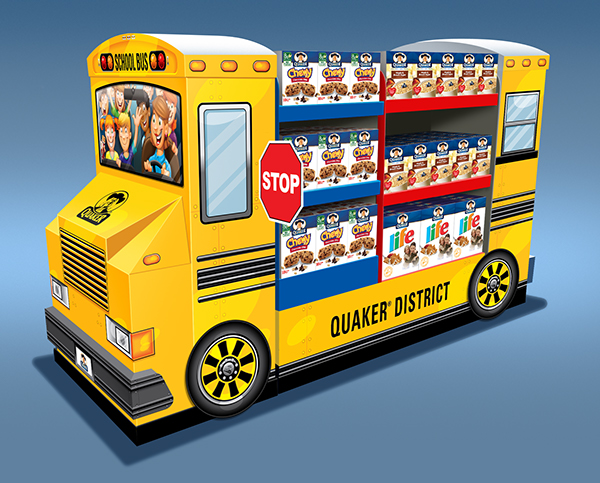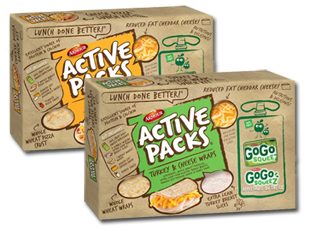After months of entertaining energetic children, parents all over the United States are excited for the school bell to ring once again. As children head back into school hallways, parents head into grocery stores in an attempt to pack lunches that their kids will actually eat.
It’s an important time of year for children to get into a routine, for parents to get some free time, and for consumer product goods brands to gain new and loyal customers. Therefore, brands need to make an initial impact that will result in long-term buyers and happy children wanting more of their product.
The market
The market for school lunch foods is evolving as consumers become increasingly focused on health. Nielsen’s survey revealed that more than half of parents, although confident that school lunches have improved in the past five years, still feel the need to purchase better options for their children’s diet. In fact, more than half of parents choose to pack lunches for their children, despite recent attempts by schools to improve their food. A large market is available if brands can win over the parents.
For many years, popular items included fruit cups and cereal bars, but both of these categories have declined in sales over the past year. The spread of information on the negative impacts of certain ingredients and the emergence of healthier alternatives shifted the lunch foods market in the past two years from traditionally popular items toward new, healthy foods and brands. Items that see significant increases in sales during the months of August through October are produce, healthy sports drinks, and hummus.
Specifically, the same Nielsen study revealed 39 percent of parents look for snacks without high fructose corn syrup, and 35 percent avoid artificial ingredients. Instead, parents are looking for items made with fruits and vegetables (62 percent) that are high in fiber (57 percent), contain natural flavors (55 percent), are low in sodium (52 percent), and are low in sugar or sugar-free (51 percent).
How to market
When it comes down to buyers of these products, marketing decisions get tricky. Often, there are two opinions from two drastically different consumers, which makes marketing difficult. While parents are the ultimate buyers, children heavily influence the purchasing of items they want to eat every day.
A study by AdWeek states millennial moms still shop in stores, rather than online, so it is important to make sure the product will trigger an impulse buy. These millennial moms are especially important to capture as loyal consumers considering they’re likely to be in the beginning days of parenthood.
Packaging.
It’s important to know who to target when there are multiple players in the game. Choosing “fun” packaging for a child to enjoy can be effective, but so can healthy and conventional packaging to ease the parents. Some brands even manage to implement a mixture of these two strategies.
The first potential strategy is to grab the child’s attention. Although the child is not the buyer, he or she is the end consumer and will decide whether the item returns home in the lunch box uneaten. By appealing to children’s interests, which can be done using popular themes, color theory, and teaming up with non-food brands (minions, as seen in this example), children will try to convince their parents to buy a product.
Another strategy is to target the buyer, which is typically a parent. By impressing parents with nutritional information and convenient packaging, it makes their life easier, and they feel good about what they are giving their children. As previously mentioned, there are specific selling points that many parents are looking for, such as high fiber and low sodium. Labeling the packaging with these points helps a product stand out against competitors that sit next to them on the shelf. Parents also look for easy items to throw into a lunch box, so packaging an item to be convenient is a major selling point.
Trade spend.
Major market leader, Kraft Foods Group, Inc., recently made a </spanstatement on its back-to-school focus. “We are planning stronger in-store activity as we move forward, including back-to-school, behind mainstays like Oscar Mayer, Kraft Cheese, Lunchables and Capri Sun.” Stating this as their “strongest innovation pipeline” yet is telling of the importance of in-store promotions at the right times.
Back-to-school lunch shopping is the perfect time to offer discounts and put up displays because many parents are shifting their buying patterns from summertime to portable school lunches. By offering price-saving deals or getting the product right in front of the buyer, consumers are more willing to try a product with the potential to become a future loyal customer.
Once again, it’s important to choose the target—parents or children. Certain items, such as cereal, salty snacks, and sugary treats, are often up to the child to pick out. It is best to have these at the eye level for children, so they can grab them and hand them to the parents. Meanwhile, items like packaged fruit, granola bars, and other healthy choices should be attention-grabbing for the parents. There are many strategies to achieve this, but displays and promotions tend to have the largest impact.

Focusing a significant portion of a marketing budget toward back-to-school advertising can achieve a large influx of new and loyal consumers. It is an important time of the year for consumer goods brands to plan packaging and promotion strategies because these shoppers are in the market for trying new items for their children’s lunch boxes.
Observa offers an easy solution to ensure these promotions are present and up to the standards of the brand in a timely matter. We collect real-time individual retail execution data to ensure your trade promotions are providing a positive ROI.
